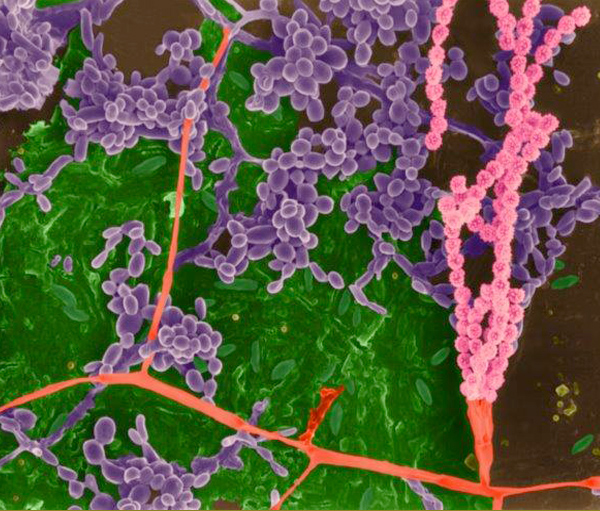
© Dennis Kunkel Microscopy
Home Resources Pathogens What is Yersinia enterocolitica?
What is Yersinia enterocolitica?

© Dennis Kunkel Microscopy
Yersinia is a gram negative bacterium that causes an acute bacterial enteric disease characterized by a febrile diarrhea, enterocolitis and acute mesenteric lymphadenitis that mimic's appendicitis.
What diseases are caused by the Yersinia species?
Yersinia pseudotuberculosis causes a zoonotic disease of wild and domesticated birds and mammals. Human beings are considered to be incidental hosts and may transmit the disease. Human cases of the disease have been due to contact with household pets, particularly sick puppies and kittens. This bacterium is of concern since it does have the ability to multiply rapidly under refrigeration and low oxygen conditions. Yersinia pestis has been implicated as the causative agent in plague.
How does the enteritis caused by Yersinia enterocolitica manifest?
Yersinia causes an acute bacterial disease that causes diarrhea and/ or vomiting. Fever and abdominal pain are also classic symptoms and the disease may mimic appendicitis. In up to ¼ of the cases, bloody diarrhea is reported. The bacteria may also cause infections of other sites such as wounds, joints and the urinary tract.
Incubation Period
The most common incubation period is between 3 to 7 days and generally under 10 days.
Epidemiology of Yersinia
Yersinia enterocolitica is transmitted via the fecal-oral route and is most often transmitted by eating or drinking food or water that has been contaminated by contact with infected animals or people. This organism is most commonly found in raw pork or pork products such as chitterlings (pig intestines), but there have also been outbreaks associated with tofu and pasteurized milk that was cross contaminated. Nosocomial transmission has been reported and there have also been reports of transmission by transfusion of stored blood from asymptomatic donors.
Diagnosis
Yersiniosis is usually diagnosed by a stool culture; however, yersinia can also be cultured in vomitus or in standard blood media.
Treatment
This organism is resistant to penicillin and its derivatives. The best course of treatment seem to be from the tetracyclines, however, the newer quinolones such as ciprofloxacin may also be effective.
Contact EHA Consulting Group today for more information about how we can assist your company.